Bacchanalia and many other scenes are connected to Dionysian mysteries

BACCHANAL OF THE ANDRIANS
Titian
1523-1526
Museo del Prado, Madrid, Spain
The inhabitants of the island of Andros (known as ‘Andrians’) celebrate a gift from Dionysius: a river of wine. This was one of the ‘miracles’ popularly attributed to the god, soon to be venerated as the god of the vine. In his play The Bacchae, Euripides gives an account of the miracle: “One of [the Bacchants] hit the rock with her thyrsus and water spurted out of it; when the other brought down her narthex to the ground, the god sent forth a spring of wine. Those who desired a white drink scratched the earth with their fingernails and had streams of milk. The ivy on the thyrsus dripped with honey... Ah! have you seen?”
For their part, the inhabitants of Teos in Ionia were proud of their wine source, which sprang to life on a particular day each year. They claimed that this proved that this was the god’s birthplace (see Diodorus of Sicily and Pliny the Elder). In the city of Elis, sealed empty wine urns were placed in the temple the day before the festival; these would be retrieved in the morning, filled with wine.

THE FEAST OF THE GODS Giovanni Bellini and Titian, 1514/29 - NGA, Washington DC / 1

A BACCHANAL SCENE WITH THE DRUNKEN SILENUS AND BACCHANTS CAVORTING IN A VINEYARD Dosso Dossi, ca. 1515/40 - Private collection

A BACCHANAL Niccolò Frangipane (attrib.) 2nd half of the 16th century - Private collection
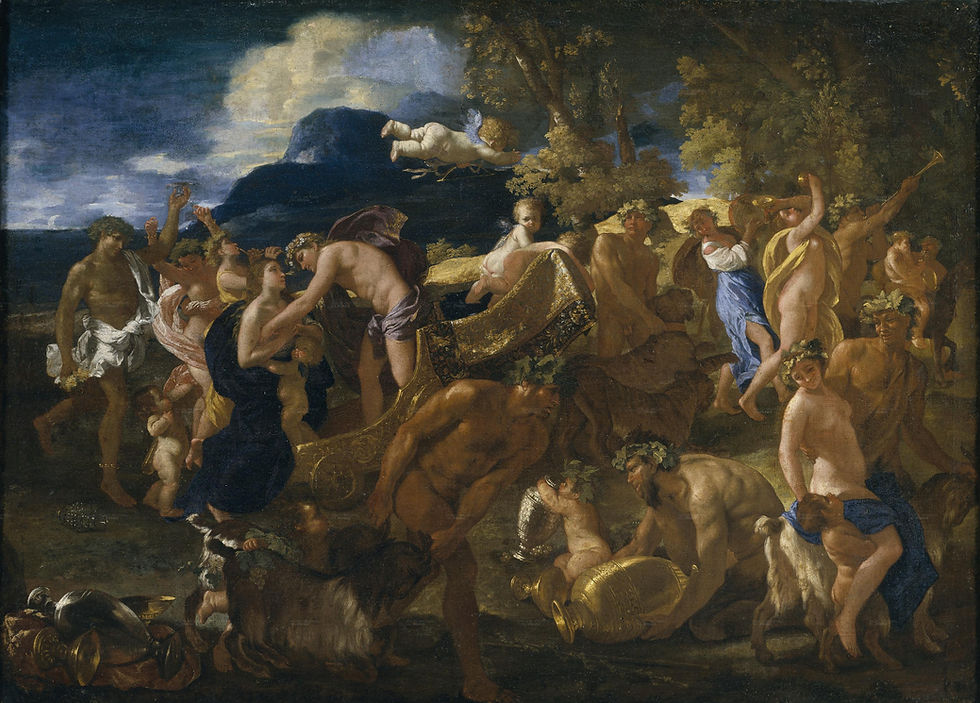
BACCHANAL Nicolas Poussin, between 1624 and 1625 - Museo del Prado, Madrid, Spain
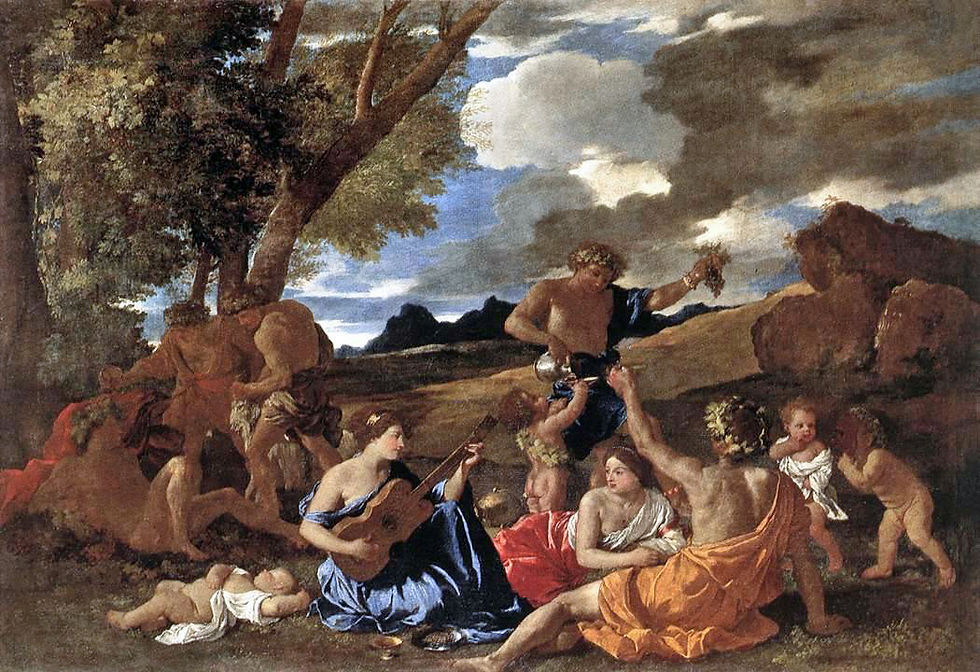
BACCHANAL: THE ADRIANS (BACCHANALE A LA JOUEUSE DE GUITARE or LA GRANDE BACCHANALE) N. Poussin, ca. 1627/28 -Louvre, Paris / 4

BACHIC SCENE Nicolas Poussin, 1627 - Staatliche Museen, Kassel, Allemagne
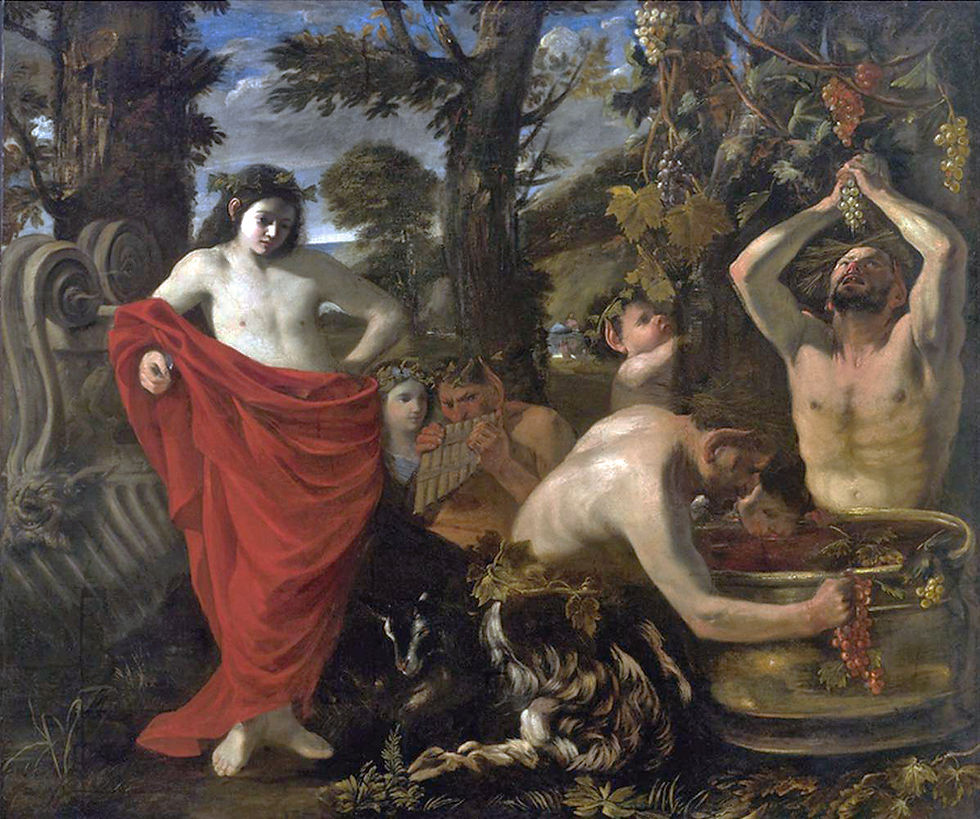
BACCHUS OVERSEEING THE CRUSHING OF THE GRAPES BY HIS SATYRS Pier Francesco Mola, 1648/49, Private collection
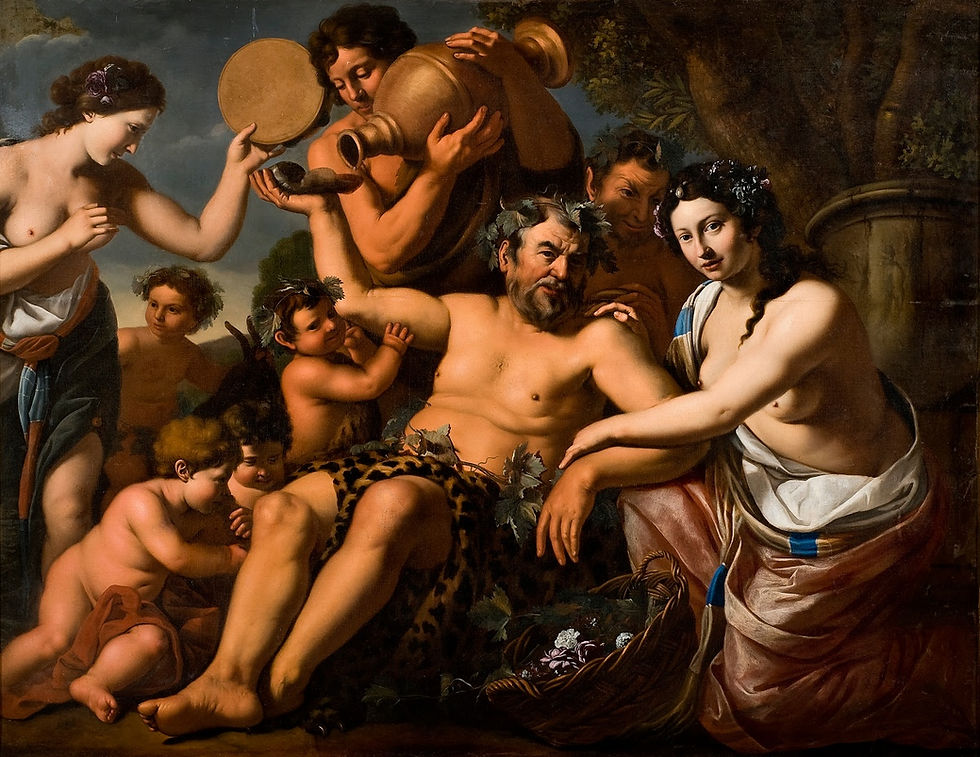
BACCHANAL WITH SILENUS Gerrit van Bronckhorst, 17th century - Museo de Arte de Ponce, Porto Rico

SCENE WITH BACCHANTS Jacob van Loo, 1653 - Rijksmuseum, Amsterdam, The Netherlands
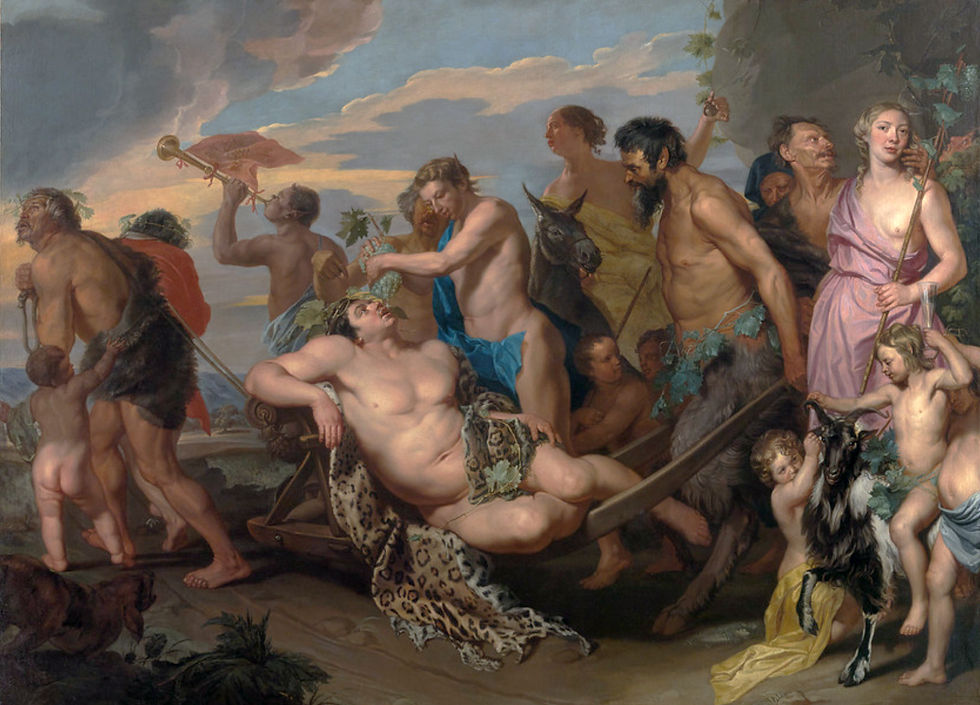
BACCHANAL Michaelina Wautier, bef. 1659 - Kunsthistorisches Museum, Vienna, Austria

BACCHANAL Jacques Jordaens (after), 17th century - Dulwich Picture Gallery, London
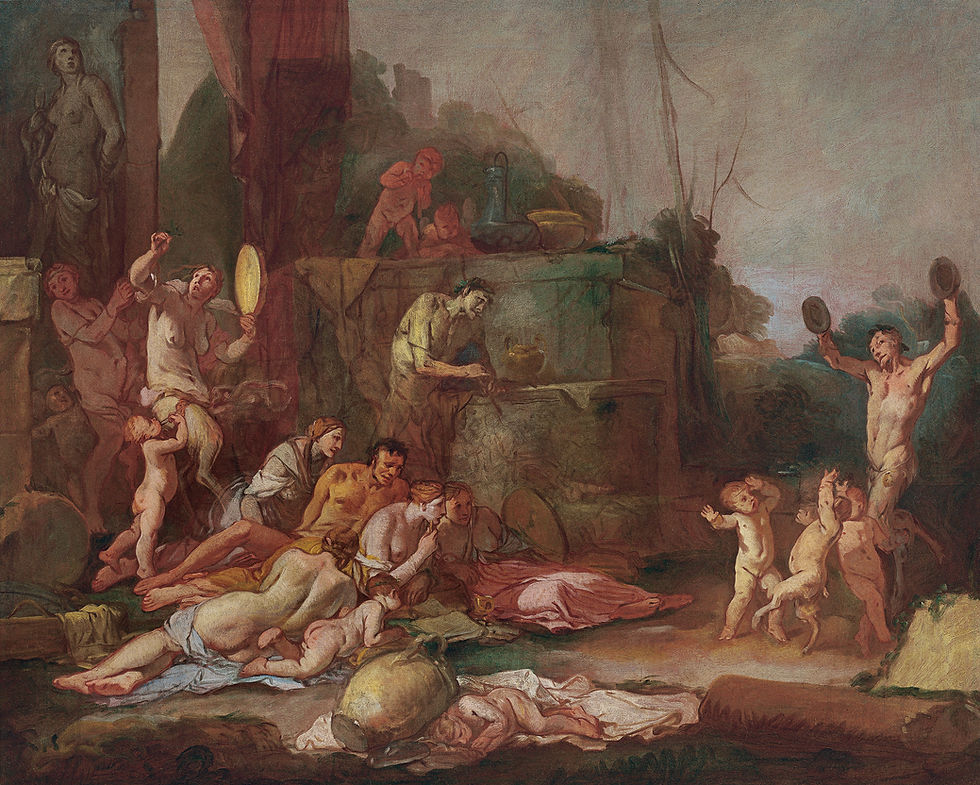
BACCHANAL Giulio Carpioni, 1660/65 - Museo Nacional Thyssen-Bornemisza, Madrid, Spain
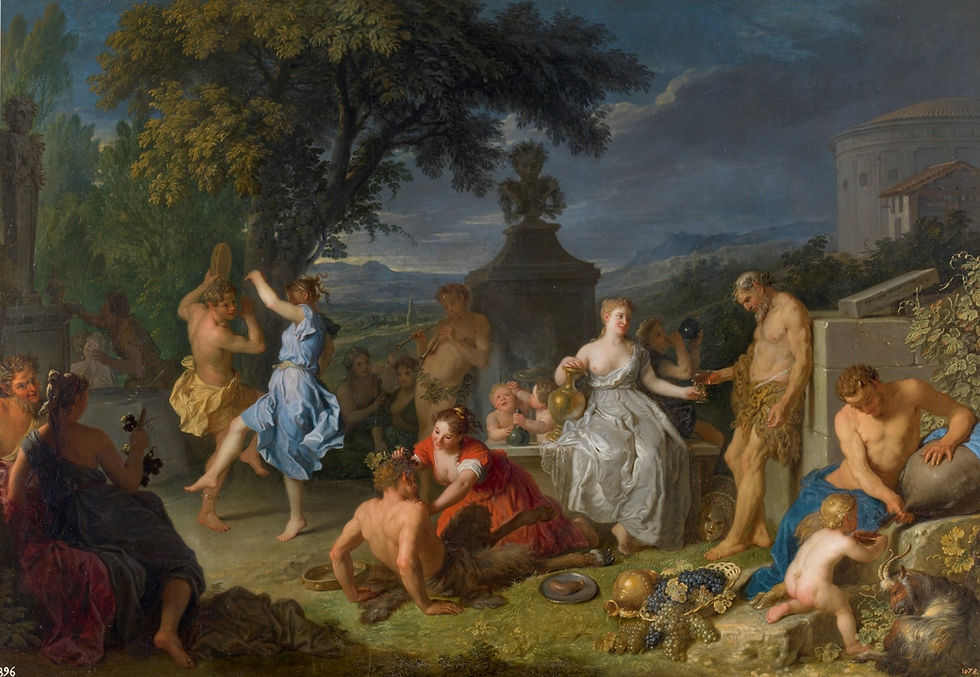
BACCHANAL Michel-Ange Houasse, 1719 - Museo del Prado, Madrid, Spain
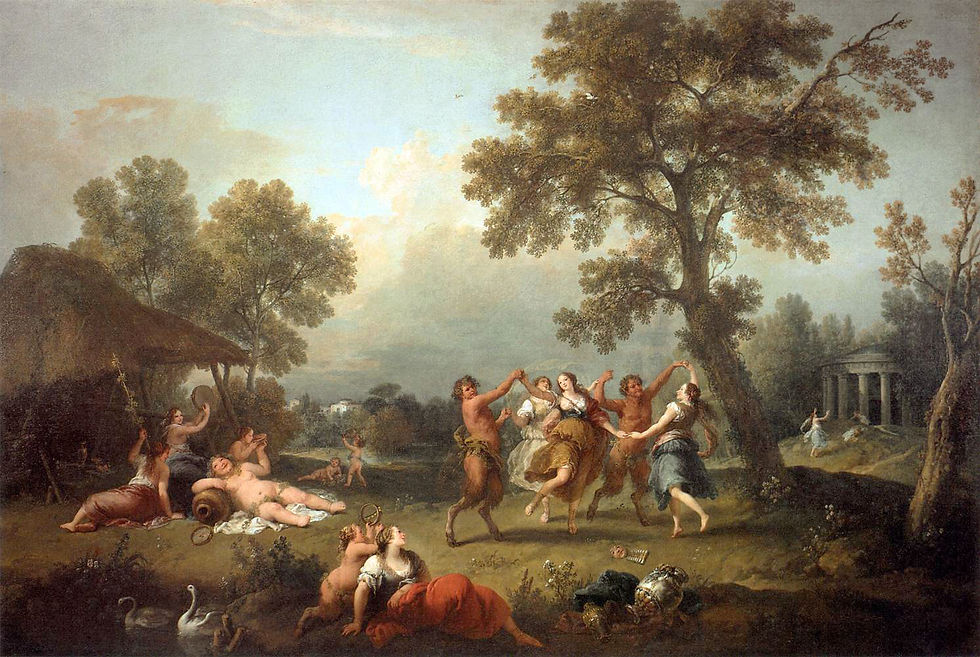
BACCHANAL Francesco Zuccarelli, 1740-1750 - Academia, Venise

BACHIC DANCE (DANSE BACHIQUE) André Derain, 1905/06 - Museum of Modern Art, New York
> Click on the icons for a closer look at the artworks
1. "At first glance this appears to be a pastoral scene: a group of men and women who have met up for a sociable outdoor feast. These ‘people’ are in fact gods […] One night, while the nymph Lotis is sleeping, Priapus approaches. The famously ithyphallic god has decided to possess her. He is on the point of touching Lotis when Silenus’ donkey, Bacchus’ loyal companion, starts to bray. The noise awakens everyone, Lotis included; this was how, to the great amusement of everyone, the young woman escaped Priapus’ advances” (Patrick de Rynck, Le sens caché de la peinture, Leçons des maîtres anciens, Ludion). Ovid was at the root of this story. Fernand Botero obverved that “Giovanni Bellini’s astonishing painting is one of my favorite works of art; in this image, the extraordinary precision afforded by the old-fashioned tempera soaking technique is complimented by the sensuality of oil painting, which had recently appeared in Italy. For this sixteenth-century Italian painting, the novelty of the subject and composition and its lyricism on the themes of pleasure and abandon was to become a source of inspiration for a number of other painters, from Titian and Poussin to Ingres and Picasso. The refined palette of colors is one of Venetian painting’s most beautiful demonstrations of its mastery of diverse chromatic forms.”
5. This painting might illustrate a passage from Philostratus describing the island of Andros, where – by the grace of Bacchus – wine ran in streams. Poussin may have been inspired by Titian’s Bacchanal of the Andrians (see above) (from Louvre).
GALLERIES NECTAR OF THE GODS
> Wine and Painting > From Divine to Sacred > Nectar of the Gods > Bacchanals and Bacchanalian Scenes




